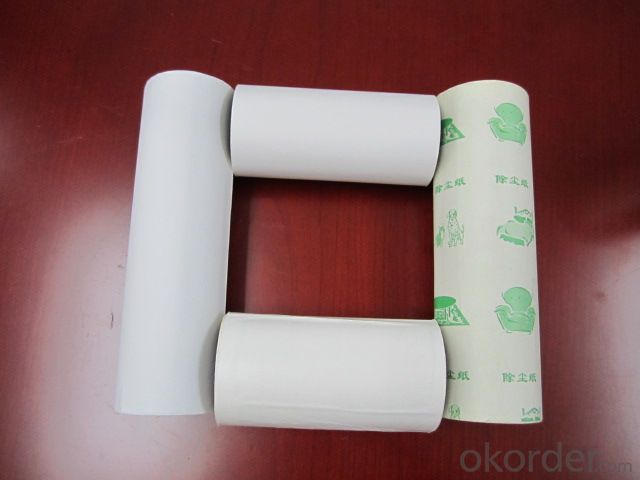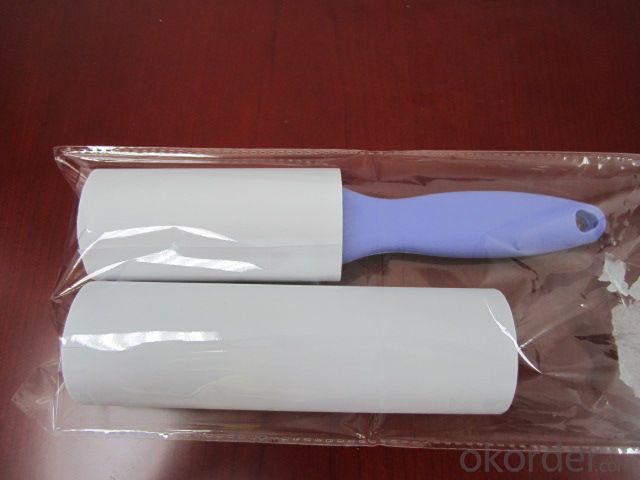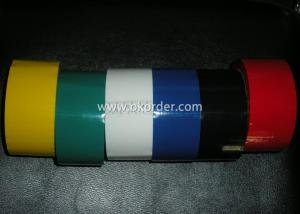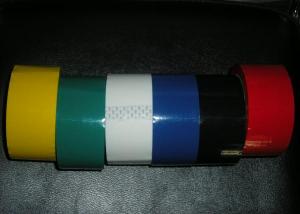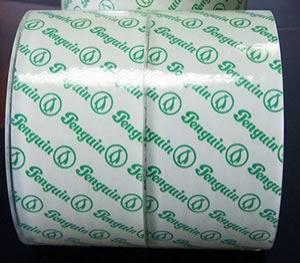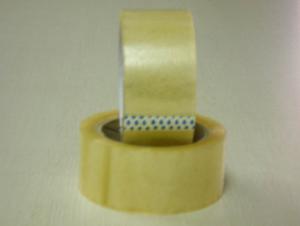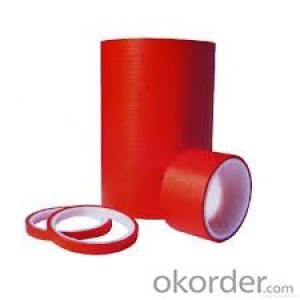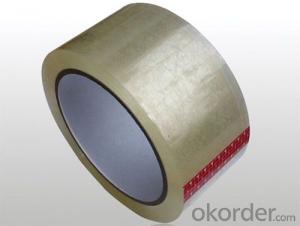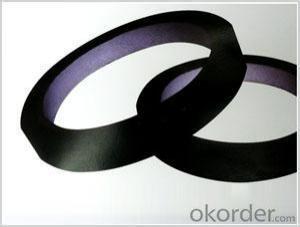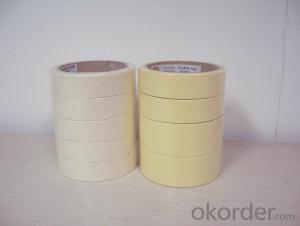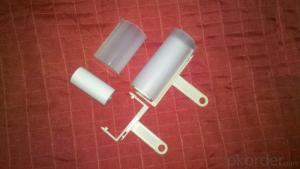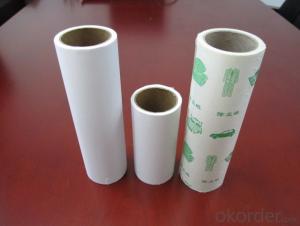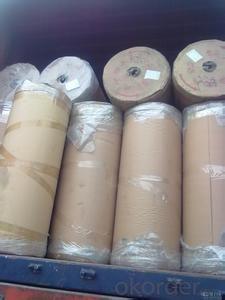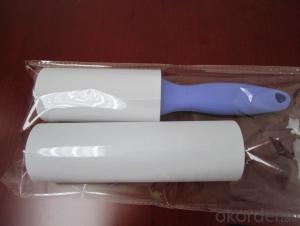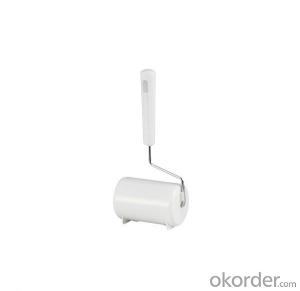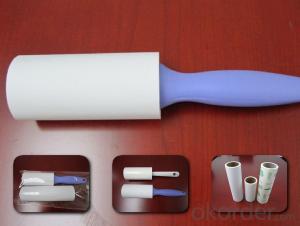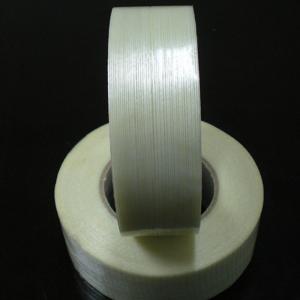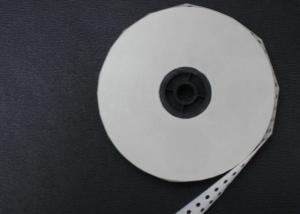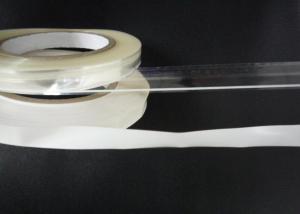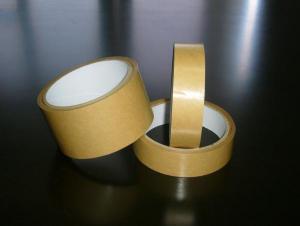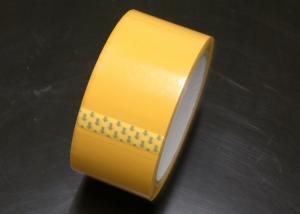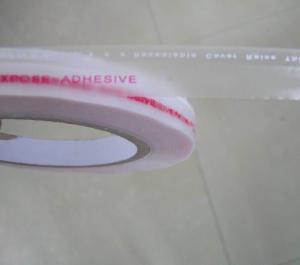Translucent Packaging Tape Sticky Cleaning Tape and Fluff Lint Roller
- Loading Port:
- China main port
- Payment Terms:
- TT OR LC
- Min Order Qty:
- 10000 roll
- Supply Capability:
- 10000000 roll/month
OKorder Service Pledge
OKorder Financial Service
You Might Also Like
Specification
1.Used for wiping off hair,dust and scurf
2.Very small exquisite and easy to carry
3.Non-poisonous and odorless
4.Refillable
Features
Sticky Cleaning Lint Roller (refill ,remover)
Used for wiping off hair, dust and scurf on clothes, cars, sofas, blankets, curtains and beds.
Small, exquisite and convenient to carry
Electric supply or water not required
No noise and no electromagnetism disturbed.
Strong sticky and nice glue
Cleaning tapes can be used for families, hospitals, offices and other
special places (such as railways, engine rooms, computer rooms, labs)
Stick-lay of this products is dealt with special request, which is a green product
Product Description
Material: paper base
Coated special treated adhesive layer
With 10- 60 layers or 1-9M
Layer: spiral sheet or straight cutting sheet
Cardboard tube length: 10cm
The tube inner diameter: 3.75 to 3.85cm
Plastic handle: 20 to 22.5cm
Handle: as follows,any color is acceptable
Usage
Suitable for home, hospitals, offices.It is the best solution for removing unwanted hair or dust on clothes, pets, furniture,
carpets, curtains and car interiors. No need electric supply or water. Just tear off each section when used and ready to go again.
- Q: Can packaging tape be used for sealing furniture or home goods?
- Yes, packaging tape can be used for sealing furniture or home goods. Packaging tape is designed to provide a secure and strong seal, making it suitable for various purposes including sealing boxes and packages. When used on furniture or home goods, packaging tape can help keep the item protected during transportation or storage. It is important to ensure that the tape is applied properly and that it does not damage the surface or leave any residue. Additionally, depending on the weight and size of the item, it might be more appropriate to use specialized tapes or techniques for sealing furniture or home goods to ensure maximum protection.
- Q: Is packaging tape flammable?
- Packaging tape is generally not flammable. Most packaging tapes are made from materials like polypropylene or polyester which have high melting points and are resistant to flames. However, it is important to note that the adhesive used on the tape may vary depending on the brand and type of tape. Some adhesive formulations may contain flammable components, but these are typically present in very small amounts and are unlikely to cause a significant fire hazard. Nonetheless, it is always recommended to follow the manufacturer's instructions and keep packaging tapes away from open flames or potential sources of ignition to ensure safety.
- Q: Can packaging tape be used for sealing paper bags?
- Yes, packaging tape can be used for sealing paper bags.
- Q: Can packaging tape be used for sealing plastic storage bags?
- Packaging tape has the capability to seal plastic storage bags, ensuring a tight seal that prevents the entry of air or moisture. This feature proves particularly advantageous when safeguarding items such as food, clothing, or other valuables from dirt, dust, or potential harm. Nevertheless, it is crucial to acknowledge that although packaging tape can provide a reasonably secure seal, specialized bag sealers or sealing clips designed explicitly for plastic bags may offer a more dependable seal.
- Q: Can packaging tape be used for sealing packages with sharp or pointed objects?
- Indeed, packaging tape is capable of sealing packages that contain sharp or pointed items. Its purpose is to create a reliable seal for packages, effectively keeping together those that hold sharp or pointed objects. Nonetheless, it is crucial to ensure that the tape is tightly fastened and covers all edges and corners of the package to avoid any potential harm or damage during handling or transportation. Moreover, it is advisable to apply multiple layers of tape or employ supplementary protective measures, like cushioning materials, to reinforce the security and safeguard the sharp or pointed items enclosed within the package.
- Q: Does packaging tape come in different colors for organization purposes?
- Yes, packaging tape does come in different colors for organization purposes.
- Q: Can packaging tape be used for sealing packages with jewelry or valuables?
- Yes, packaging tape can be used for sealing packages with jewelry or valuables. Packaging tape is designed to provide a secure and durable seal, making it an excellent choice for ensuring the safety of your valuable items during shipping or transportation. It is strong and adhesive enough to securely close the package and protect the contents inside. However, it is always recommended to take additional precautions when shipping valuable items, such as using bubble wrap or cushioning material to provide extra protection.
- Q: Can packaging tape be used for sealing packages with sharp edges or corners?
- Yes, packaging tape can be used for sealing packages with sharp edges or corners. Packaging tapes are designed to be strong and durable, allowing them to securely seal boxes and packages of various shapes and sizes. They are commonly used in shipping and packaging industries to ensure that the contents of a package remain intact during transit. The adhesive on the tape is typically strong enough to adhere to sharp edges and corners, providing a reliable seal. However, it is important to ensure that the tape is applied properly and securely to prevent any potential damage or tampering during shipping.
- Q: Can packaging tape be used for sealing envelopes?
- Yes, packaging tape can be used for sealing envelopes. Packaging tape is designed to provide a secure seal on boxes and packages, but it can also be used effectively to seal envelopes. It offers strong adhesive properties, ensuring that the envelope remains sealed during transit. However, it is important to note that packaging tape may not be the most aesthetically pleasing choice for sealing envelopes, as it is typically wider and less transparent than traditional envelope-sealing options such as glue sticks or clear tape.
- Q: Can packaging tape be used for sealing plastic lunch boxes?
- Indeed, plastic lunch boxes can be sealed using packaging tape. This type of tape is crafted to possess formidable strength and adhesive capabilities, rendering it appropriate for sealing a wide array of materials, plastic included. Its capacity to provide a secure seal ensures that the contents of the lunch box remain fresh and safeguarded. Nevertheless, it is crucial to acknowledge that using packaging tape on plastic lunch boxes may result in residue or surface damage upon removal. To avoid such complications, it is advisable to employ tape specifically engineered for sealing food containers or explore alternative methods such as rubber bands or clips, which are designed to secure plastic lunch boxes without causing any harm.
Send your message to us
Translucent Packaging Tape Sticky Cleaning Tape and Fluff Lint Roller
- Loading Port:
- China main port
- Payment Terms:
- TT OR LC
- Min Order Qty:
- 10000 roll
- Supply Capability:
- 10000000 roll/month
OKorder Service Pledge
OKorder Financial Service
Similar products
Hot products
Hot Searches
Related keywords


